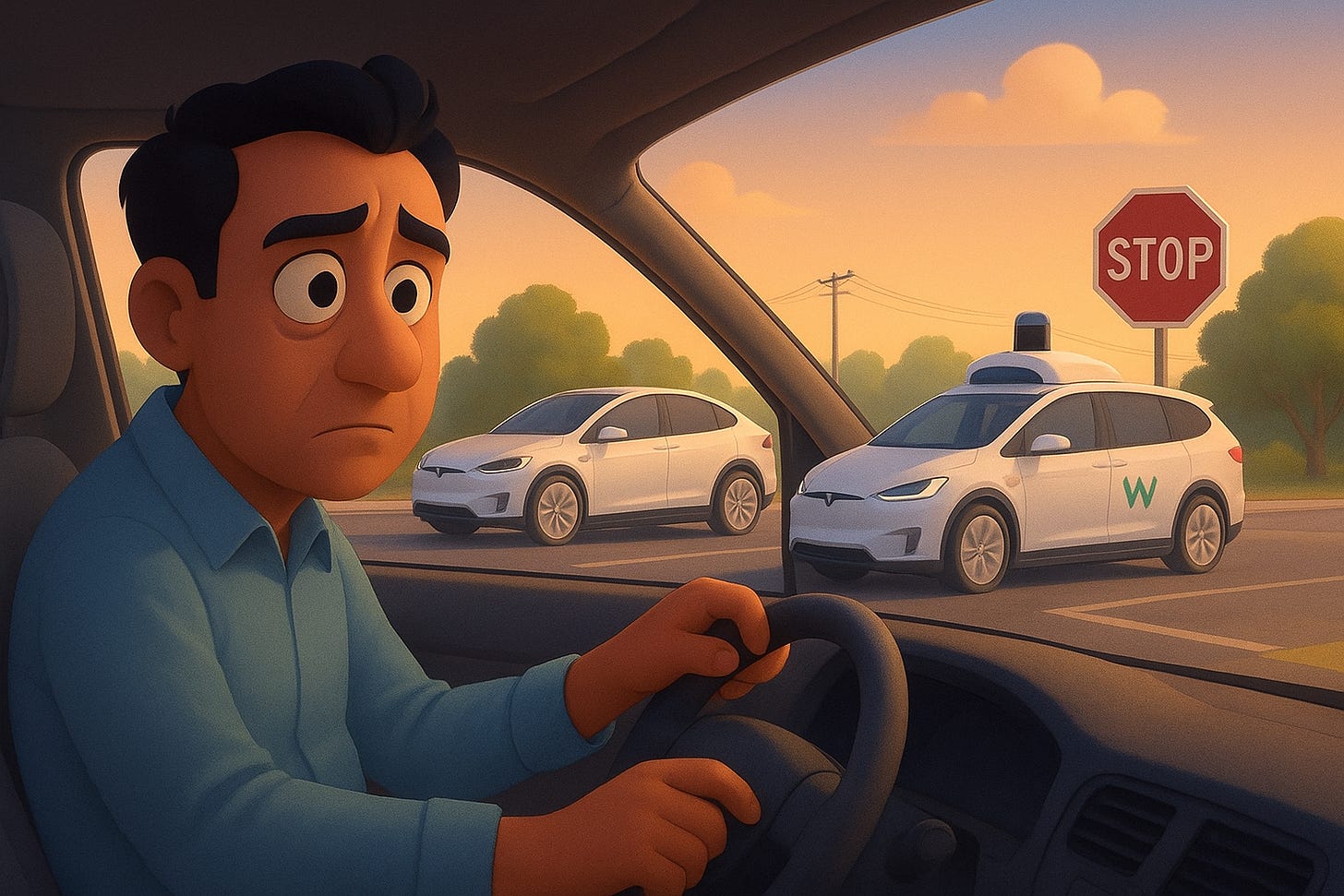Staredown
Self Driving Cars
Dwarkesh rolled to the stop sign, his sedan sighing as if tired of the day. Across from him, a Tesla Model X glided to a halt, whisper-quiet. To the right, a Waymo van stilled, its spinning sensor crown glittering in the sun.
Three cars. Three stop signs.
Dwarkesh leaned forward. The Tesla’s windshield flashed back the light, empty. The Waymo’s glass looked dark, like a mask. He almost lifted his chin—habit, an instinct to nod—but stopped himself. No one was there to meet it.
He rested his hands on the wheel, waiting for someone to twitch, to wave, to grant permission. Nothing. Only brake lights glowing, machines locked in patience.
The silence thickened. The ticking of his cooling engine sounded louder, more uneven. He thought of other intersections—of the guy in a pickup who’d once rolled down his window to wave him on with a smile, of the harried mother who’d mouthed “sorry” after starting first. Those tiny exchanges had made the roads bearable, even kind.
Now there was only glass, sensors, and algorithms negotiating with one another in invisible code.
Dwarkesh drummed the wheel, then let his car creep forward a hair. “Alright, then. I’ll go.” His voice sounded thin, swallowed by the cab.
But the moment his brake lifted, both robotaxis lunged. The Tesla shot ahead, the Waymo cut across, their paths crossing with violent grace before veering apart. In a blink they were gone, tires whispering against asphalt, their precision sharp as scalpels.
Dwarkesh froze, his sedan trembling faintly in their wake. The intersection emptied so quickly it felt staged, as if he had been left out of a play.
His heart beat hard, but the road lay silent again, expectant. He waited for the old ritual: the nod, the wave, the human gesture that said we saw each other.
Nothing came.
Finally, Dwarkesh pressed his shoe more firmly on the brake, as though holding himself in place mattered. Cars might pass, lights might change, but until someone looked back at him, he wasn’t moving.


